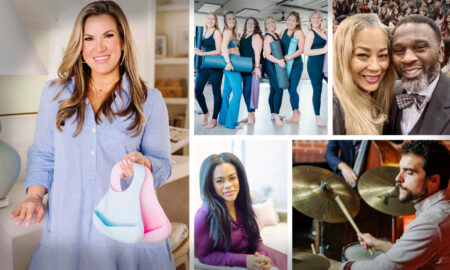
Today we’d like to introduce you to Vic Rodriguez Tang.
Hi Vic, we’d love for you to start by introducing yourself.
I’m a Peruvian-Chinese queer creative human from Lima, Perú, living in Austin, Texas. I grew up in the Dallas area and have worked as a designer and art director in the Dallas and Austin areas since 2008. I recently finished my MFA in graphic design at Vermont College of Fine Arts in the spring of 2022, and I teach full-time as an associate professor of practice at The University of Texas in Austin in the School of Design and Creative Technologies.
My area of concentration in my research, passion projects, and community service-based work have always focused on using design principles and design thinking to problem-solve and bring awareness about issues faced by vulnerable communities that I belong to. My creative approach and teaching style always come from an empathetic angle or reaction to the matters I have personally experienced as a queer, nonbinary, immigrant, Latinx human being with a disability living in America today.
Would you say it’s been a smooth road, and if not, what are some of the biggest challenges you’ve faced along the way?
It definitely hasn’t been easy. My family and I immigrated to Texas when I was 15 years old. At the time, it was just me, my parents, and my sister, who is a year younger than me. We came with tourist visas, and ended up staying illegally until 2019, when we all were able to apply for permanent residency in the States. Soon after we moved, we found out my mom was pregnant with twins, which was not planned. My parents had tried to have more kids after my first sister was born, but they were told that my mom most likely wouldn’t be able to have kids again after her second pregnancy. As soon as I turned 16, I started working to help with the bills at home. My mom couldn’t work during her pregnancy as she had to get rest often during it due to minor complications during her pregnancy. She was 37 years old when she got pregnant with the twins. My sister was too young to get a job, so as the other “man” in the house, it was my responsibility to help out economically at home. I worked nearly 30 to 40 hours per week while going to school and playing tennis for my high school’s team. I was busy, that’s for sure! On top of all that, I didn’t speak any English, which made things very interesting. Despite all these challenges, I graduated high school in the top 15% of my class and finished in three years.
Appreciate you sharing that. What else should we know about what you do?
I’ve been spending most of my time lately in my area of research, which focuses on the effects of gendering design elements, such as basic shapes, pictogram systems, typefaces, and colors, within the design and advertising industry throughout the years. I do this by unpacking visual gender biases using orthodox and unorthodox design explorations to test my research findings. My outcomes, influenced by queer design history and practices, challenge patriarchal, sexist, ableist, xenophobic, misogynist, and queerphobic views and explore ways to “queerify” graphic design. I’m also always looking for ways to create art through photography and creative writing that reflect my experiences to bring awareness to issues my communities and I face.
I recently self-published a book that was part of my MFA requirements to graduate, gaining some traction that wasn’t expected. My book titled “Pink Circles. Blue Squares.” is an informational and practical guide to help fight gender biases in the field of graphic design specifically. This book is just the beginning of this ever-evolving topic, gender biases in graphic design, but I hope this can serve as a resource for those with questions like me. Questions such as “why is pink for girls?” And “where did that come from?” Or “how does that affect my design?” There must be reasons that explain why we design the way we create! I also realized that many of my gender and graphic design biases started in school while in undergrad. As an educator and designer, I wanted to develop a tool to help others facilitate conversations about gender biases in graphic design. So, I did it! I know this book doesn’t cover everything regarding gender biases and graphic design, and it is written from my perspective. Like everyone else, I have biases, but I have tried to create a resource as neutral as possible.
Some of my other design work as seen on my website, it has been recognized throughout the years by The Dallas Society of Visual Communication, The One Show in New York, HOW’s Logo Design Awards, Fast Company, and HOW’s International Design Awards.
Networking and finding a mentor can have such a positive impact on one’s life and career. Any advice?
I have had, and still have, so many wonderful mentors I have met at school as a student and educator, through volunteering in organizations within my communities, or at work, as well as mentors I have met through networking opportunities. I have always been involved in community service work in some capacity since I was in high school. I founded the first chapter of the National Hispanic Honor Society in my school district in high school, and I served as part of the junior board in a non-profit organization based in Dallas that served at-risk youth, to mention a few. Those two opportunities alone have connected me with great people and opened many doors for me. As cliche as it sounds, I recommend getting involved with groups and organizations of similar interests and using those spaces to network and hopefully find a mentor.
Contact Info:
- Website: https://yosoyvic.com/
- Instagram: @vicrodrigueztang
- Other: https://www.blurb.com/b/11136073-pink-circles-blue-squares





















